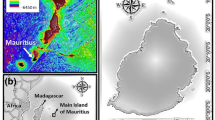Abstract
The limited petroleum resources available for mankind have led to the exploration and development of oil fields in the offshore deep-sea regions, especially in light of the rising oil prices. Different studies and projects on the ocean thermal energy conversion (OTEC) technology, which operates the power generation facilities using the temperature difference between the deep-sea water and the sea surface water, are currently being undertaken. In this study, various methods of applying the OTEC technology to a floating production storage and offloading (FPSO) facility installed in a deep-sea area were simulated and analyzed. In the closed cycle, a 1595.5 kW net power generation capacity was obtained. In the open cycle, a 863.5 kW generating capacity and 54.4 m3/h fresh water were obtained. In the hybrid cycle, a 643 kW generating capacity and 55.1 m3/h fresh water were obtained. In addition, the cooling water of the heating, ventilation, and air-conditioning systems (HVACs) obtained using deep-sea water cooling was also investigated. Ultimately, a 100 MW OTEC power plant was designed, and the required seawater amount and operating fluid capacity were confirmed. Considering the similarity of OTEC power generation facilities and FPSOs, the conversion of an FPSO in the deep-sea region to an OTEC power generation facility after the end of the life of the FPSO was proposed. It will be an alternative way of addressing two important issues: the need for petroleum resource development considering the limited petroleum resources that are currently available, and the need to ensure the sustainable development of countries.

(Source Douglas Westwood World Deep Water Market Report 2010–2014)

(Source International Energy Outlook 2017, EIA)













Similar content being viewed by others
References
Hughes C (2018) Developments in the deepwater sector. https://www.energyinst.org/_uploads/documents/DEEPWATER_hr.pdf
World Energy Consumption in Reference Case (2017) International Energy Outlook, EIA. https://www.eia.gov/outlooks/ieo/pdf/0484(2017).pdf
Kim AS, Kim H-J, Lee H-S, Cha S (2016) Dual-use open cycycle ocean thermal energy conversion(OC-OTEC) using multiple condensers for adjustable power generation and seawater desalination. Renew Energy 85:344–358
Sea Surface Temperature (SST) (2018) Contour Charts, NOAA. https://www.ospo.noaa.gov, http://www.ospo.noaa.gov/Products/ocean/sst/contour/
Binger A (2004) Potential and future prospects for ocean thermal energy conversion (OTEC) in small Islands Developing States (SIDS)
Yeh RH, Su. T-Z, Yang M-S (2005) Maximum output of an OTEC power plant. Ocean Eng 32(5–6):685–700
EGINA FPSO Project, KAOMBO FPSO project.(2018) https://www.total.com
R717 (Ammonia) (2018) Product details. http://www.linde-gas.kr
Thermodynamic Calculation Models (2007) Hysys, Aspentech
Vega LA (1995). In: Bisio A, Boots B (eds) Encyclopedia of energy technology and the environment. Wiley, New York, pp 2104–2119
Vega LA (2002) Ocean thermal energy conversion Primier. Mar Technol Soc J 2002:25–35
Bharathan D, Green HJ, Link HF, Parsons BK, Parson JM, Zangrando F (1990) Conceptual design of an open-cycle ocean thermal energy conversion net power-producing experiment. Solar Energy Research institute
Mutair S, Ikegami Y (2014) Design optimization of shore-based low temperature thermal desalination system utilizing the ocean thermal energy. J Sol Energy Eng 136(4):41005
Vega LA (2010) First Generation 50 MW OTEC Plantship for the production of Electricity and Desalinated Water. OTC 20957, Offshore technology conference
Vega LA (2012) Ocean thermal energy conversion. Encyclopedia of sustainability science and technology. Springer, New York, pp 7296–7328
Aldale AM (2017) Ocean thermal energy conversion(OTEC). Am J Eng Res. 6(4):164–167
Finney KA (2008) Ocean Thermal Energy Conversion. Guelph Eng J (1):17–23
J Provost (2016) Our Technip Technology for Energy Conversion. In: 4th International OTEC Symposium
Kibbee S (2013) Ocean Thermal Energy Conversion at SBM. In: Proceedings of the 18th Offshore Symposium.
Cunningham JJ, Magdol ZE, Kinner NE (2009) Technical Readiness of Ocean Thermal Energy Conversion (OTEC). NOAA
Brown MG (2018) F.P.S.O Technology applied to OTEC. http://www.clubdesargonautes.org/otec/vol/vol9-2-1.htm
Author information
Authors and Affiliations
Corresponding author
About this article
Cite this article
Song, Y. A study of OTEC application on deep-sea FPSOs. J Mar Sci Technol 24, 466–478 (2019). https://doi.org/10.1007/s00773-018-0567-x
Received:
Accepted:
Published:
Issue Date:
DOI: https://doi.org/10.1007/s00773-018-0567-x




